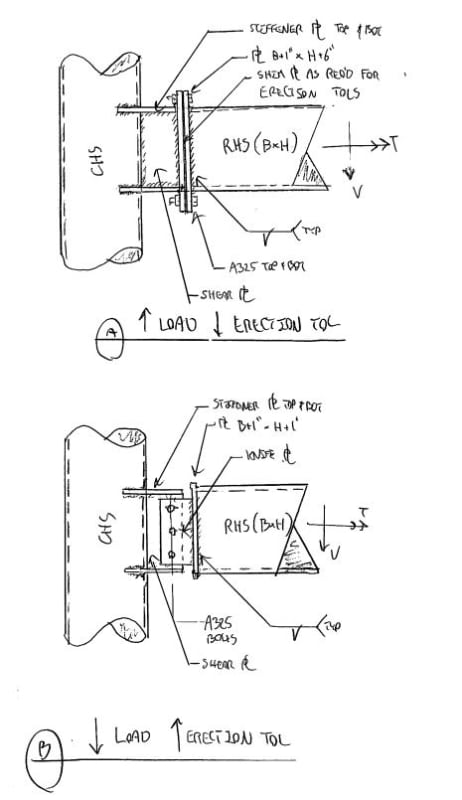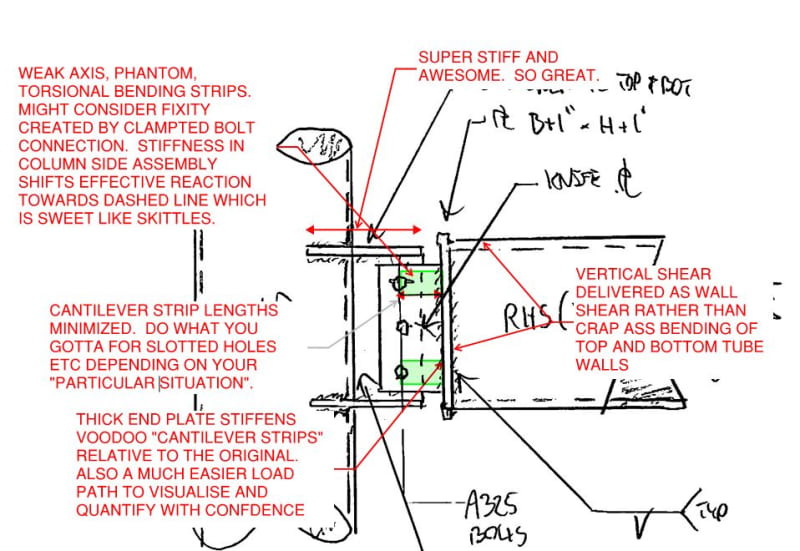STpipe
Structural
- Apr 29, 2010
- 153
Hey all,
I'm currently performing a review on design calculations submitted to us and one of the HSS beams in the structure has two point loads with an eccentricity to the beam's centroid. The connection of the beams to the columns is achieved using a plate slotted through the HSS and bolted to shear tabs that are welded on the column. This seems like a bad design and I'm not even sure how to even begin quantifying the torsional resistance of the connection. Is this simply a case where the connection detail needs to be changed?
I'm currently performing a review on design calculations submitted to us and one of the HSS beams in the structure has two point loads with an eccentricity to the beam's centroid. The connection of the beams to the columns is achieved using a plate slotted through the HSS and bolted to shear tabs that are welded on the column. This seems like a bad design and I'm not even sure how to even begin quantifying the torsional resistance of the connection. Is this simply a case where the connection detail needs to be changed?


